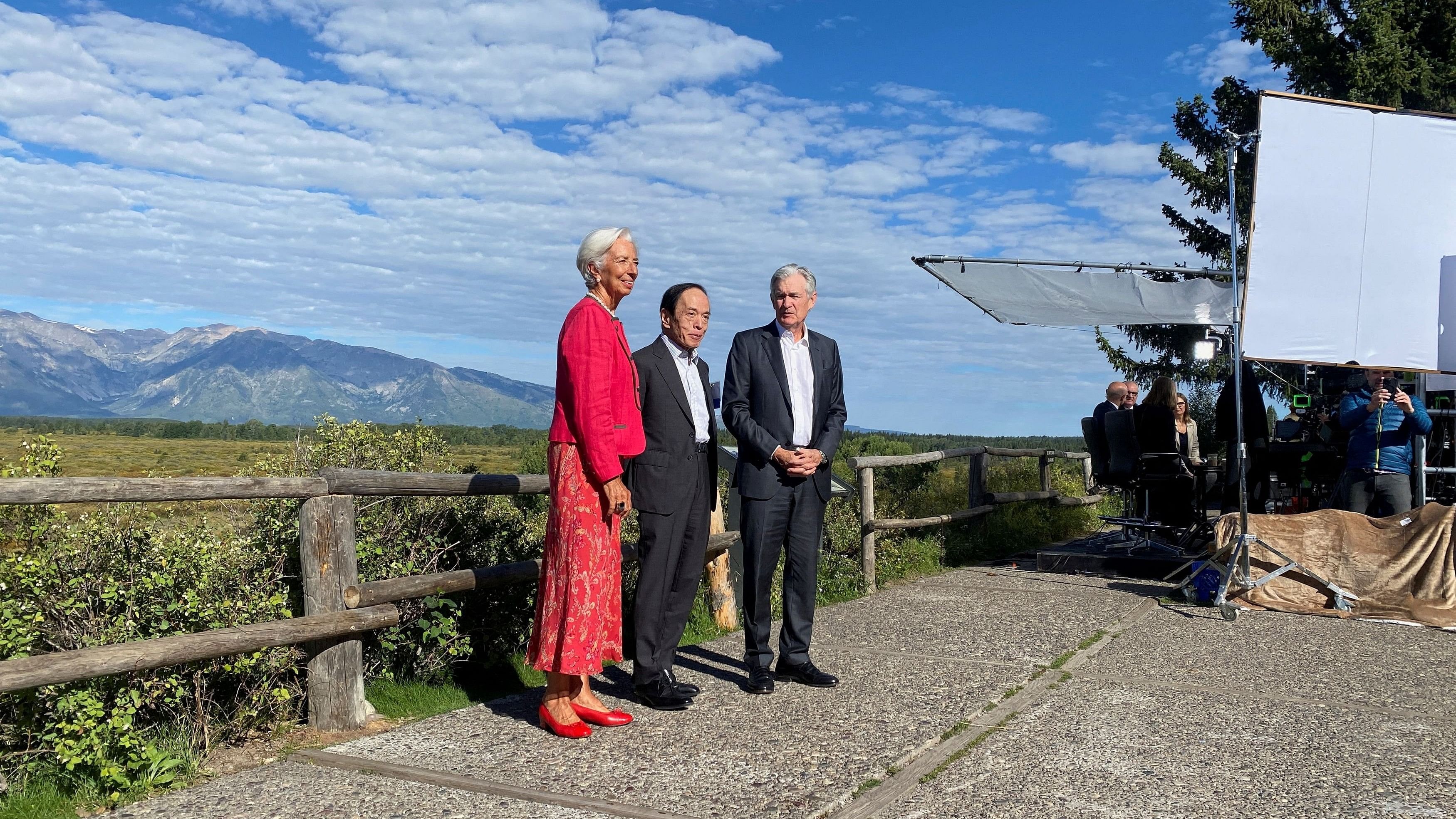
Federal Reserve Chair Jerome Powell, European Central Bank President Christine Lagarde, and Bank of Japan Governor Kazuo Ueda.
Credit: Reuters Photo
By Mohamed A El-Erian
Welcome to Jackson Hole week. It’s a week in which Wyoming, better known for its spectacular landscapes, becomes the center of the policy world as it hosts a large group of central bankers, academics and media. The gathering, organised by the Federal Reserve Bank of Kansas City, discusses recent economic and financial developments, policy issues, and the implications for central banks.
The session that inevitably attracts the most attention is when the chair of the Federal Reserve, the world’s most powerful central bank, takes to the stage on Friday morning to share views on issues of their choosing. This is not the only session that is remembered and referred to over time since the papers presented lend themselves to many interesting discussions. Some individual contributions have, over the years, had a lasting impact such as that of University of Chicago Professor Raghuram Rajan. Still, year after year, it’s the chair’s speech that attracts the most references — just mention Bernanke 2010 or Powell 2022 to central bank watchers.
This year’s presentation by Chair Jerome Powell is eagerly awaited due to the economic fluidity and financial volatility that the US has been experiencing, and its spillovers to the rest of the world. It comes in the context of an ocean of genuine uncertainty, both domestic and global, that’s amplified by the erosion of three key anchors of stability: steady and predictable economic growth, effective forward policy guidance, and only small pockets of technical vulnerability involving over-leveraged positions and excessive risk-taking by market participants.
This is why it is critical for Powell to take advantage of the golden opportunity he has this Friday to regain control of the economic and policy narrative.
The Fed’s paramount goal this year should be to re-establish the effectiveness of its forward policy guidance. It must also continue to rebuild its credibility and international standing, both of which have been eroded by the mistakes made over the last four years, from delayed policy implementation and poor forecasting to confusing communication and lapses in bank supervision.
We were all reminded of how crucial this is in early August when both markets and Wall Street analysts overreacted to three data releases that pointed to a weaker-than-expected labor market. What was notable was not just the wild gyrations in equity prices and the incredible surge in the VIX, the widely followed volatility metric dubbed the markets’ fear index. There was also unsettling volatility at the short end of the US yield curve, the segment that is most influenced by Fed interest-rate guidance and that impacts a wide range of financial, corporate and economic interactions in the US and beyond.
While the sudden and large price dislocations were reversed over the next two weeks, the unsettling episode felt like a warning of the inherent instability of the financial system. The insecurity was accentuated by what happened in the analyst community.
Some well-known Wall Street analysts and observers of finance urged the Fed to immediately implement an emergency intra-meeting rate cut — a move that I argued was unnecessary and potentially harmful. Economists who, just a few days earlier, had reaffirmed their rosy outlook for the economy rushed to revise higher the probability of an impending recession. One Wall Street bank went as far as declaring that the US economy was already in recession. The overwhelming feeling was that the Fed was once again “behind the curve,” just like in 2021 when it failed to respond in a timely manner to the upsurge in inflation, a lapse that continues to have adverse economic, political and social consequences.
I laid out in a July article eight issues crucial to America’s economic wellbeing and global financial stability that Powell should cover this week in an ideal world. Of course, we don’t live in such a world. Yet it is important to have some sort of benchmark.
I don’t expect Powell to cover all the points that I raised. But I, and others, would urge him to talk clearly about three things: where the economy and policy stand, what the policy destination looks like, and how the Fed will get there. It is particularly critical that people come away from Wyoming with a clearer picture of the new equilibrium policy rate (that neither restrains nor fuels economic activity), the path to that rate, and what a “sustainable 2 per cent” inflation target means in practice.
Absent such clarity, we should expect renewed bouts of unsettling market volatility that threaten economic wellbeing. The Fed would risk further damage to its policy effectiveness and reputation. And, countries around the world would look for more ways to “de-risk” both their economies and their financial systems from a Fed that no longer responsibly anchors what is still a dollar-dominated international monetary system.